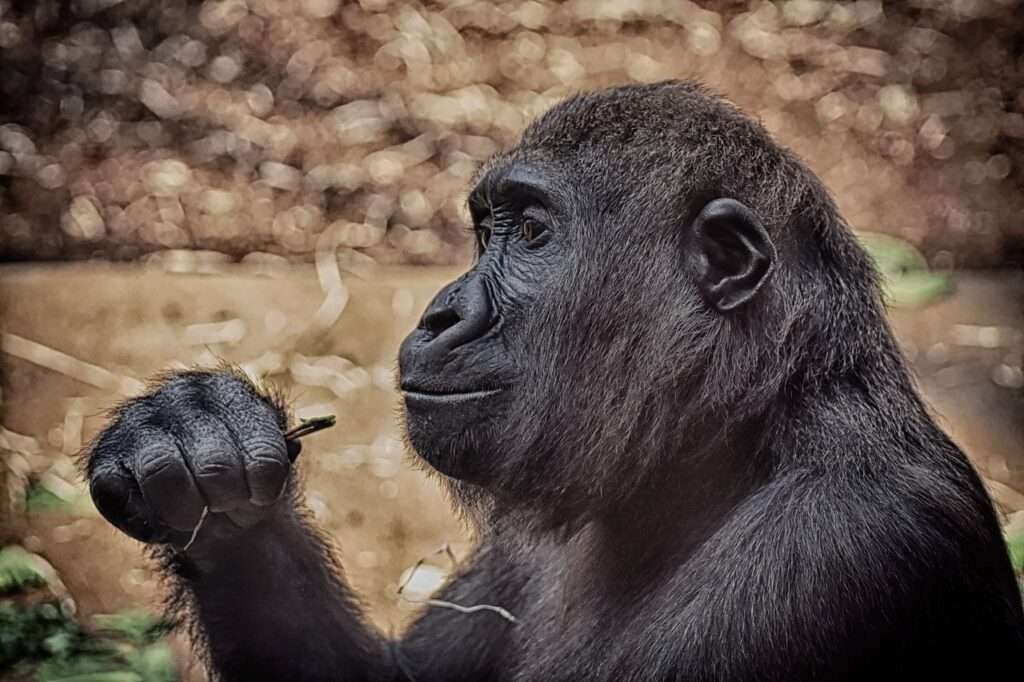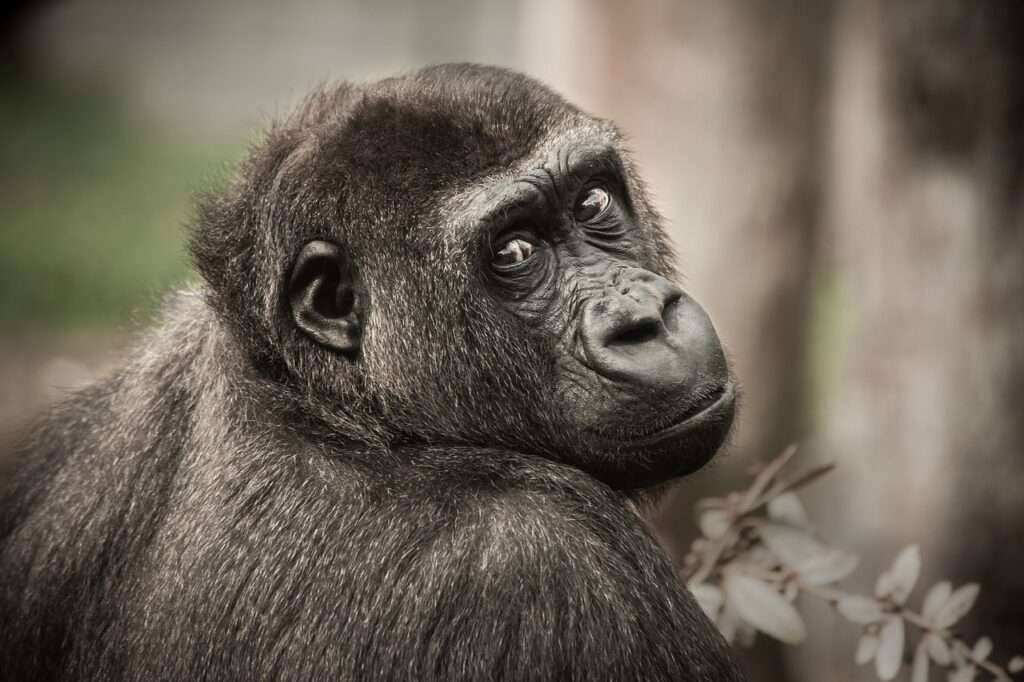BWINDI NATIONAL PARK - EXCLUSIVE
- | Bwindi National Park
Bwindi National Park
Bwindi National Park, The reasons that Bwindi National Park in southwest Uganda exhibits very high biodiversity are based on two major factors. First, wide-ranging habitats occur together with its great variation in elevation from 1160 meters with swamp forest to 2600 meters dominated by Afromontane vegetation. Secondly, Bwindi happens to be among the oldest forests-in Africa. It was supposed to have withstood the harsh conditions of the last-ice age that-occurred 12 000 – 18 000 years ago – Bwindi National Park
Biodiversity-in Bwindi National Park
- Butterflies: Over 310 species.
- Reptiles: 51 species.
- Trees: Three hundred types.
- Moths: 88 species.

Avi Fauna: Bird Watching Paradise
It is one of the finest locations for birdwatchers with over 350 species of birds. That represents seven of the species herein on the IUCN Red List, with the other 90% of Albertine Rift endemics well represented in this park. In particular, 23 species are Albertine Rift endemics, with 14 found nowhere else in Uganda. Examples of some of those-that belong to unique species-to this incllude the African green broadbil, white-tailed blue-flycatcher,-brown-necked parrot, white-belied robin-chat, and Fraser’s eagle-owl – Bwindi-National-Park.
Gorilla Treking in Bwindi National Park
Trekking gorilas would be a highlight of any visit-to Bwindi. There exist a few starting points in the park for this activity, with the most prominent one being Buhoma – Bwindi National Park
Buhoma: Gateway to Gorilla Trekking
- Mubare, 1993
- Habinyanja, 1998
- Rushegura, 2002

- Muyaga River Trail: This path is suitable for taking a short hike since it provides a view of the forest and gives one a chance to identify the bird call and primate sensations.
- The Waterfall Trail This trail cuts through the timber and by big towering trees that are trolled with epiphytic ferns and orchids and ends with the glowing drama of the falls in the demesne. Fresh
Trekking openings beyond Buhoma
Muzabajiro Loop Trail
This is the trail that takes one up Rukubira Hill to where one can get a fine sight of the Bwindi Forest, the CAMP, the Albertine Rift Valley, and the Virunga tinderboxes, limitedly stretched. However, the satisfaction one accrues from a look at the outlook is one of the finest in the world. Bwindi National Park
Rushura Hill Trail
The Rushura Hill Trail is a relatively easy trail for any trekker, and it kisses out amazing openings for any raspberry watcher to behold the falls of the timber. On a clear day while on top of the mountain – Bwindi National Park, the view on the two sides of the mountain is similar as Lake Edward and Mountain Rwenzori in the north to the Virunga tinderboxes further in the south.
River Ivy Trail
River Ivy Trail As the name suggests, this trail passes near a small River Ivy and it is an old trail linking near Nkuringo at the southern part of the demesne. This trail is longer, and besides, it has difficulties in an advanced position; organizing the passage is quite necessary. Those raspberry watchers will certainly love it, however, because the number of catcalls that you’ll see throughout the route is completely amazing – Bwindi National Park Village and Cultural Walks.
Community and Cultural Walks
Nkuringo Village Walk
Another community-based activity is the Nkuringo Village Walk. The walk brings visitors closer to the actual way of life around them, the Bakiga and Batwa. Visits include schools, businesses at the local level, traditional homes, among others, in order to give participants an in-depth understanding of the culture and traditions of the indigenous people in the area. Bwindi National Park
Conservation Efforts
Bwindi National Park is not only a haven for biodiversity but excellence in terms of its conservation management. Among the several kinds of management that go into conversation include the conservation of special ecosystems and species they support or harbour. Reserved programs on forest and wildlife conversation include anti-poaching patrols, community education, and habitat restoration projects.
Problems and Future Prospects
Notwithstanding these stretches of success in Bwindi National Park, it is beleaguered by quite a number of challenges. Activities have ensued in terms of community engagement, sustainable tourism practices that have gone at an individual level, international collaboration and coordination in a bid to solve human-wildlife conflicts, habitat encroachment, and effects of climatic change.
Community Engagement
The second of the major, critical strategies for mitigating conservation challenges at this site is the involvement of local communities in management and benefits from the park. Preoccupations with sustainable livelihoods, such as via eco-tourism and crafts, reduce dependence on forest resources and increase a sense of ownership or stewardship amongst people living near such a site.
Sustainable Biodiversity Tourism
Sensitive to the fragile ecosystems of Bwindi. This is by way of checking on the number of visitors to very sensitive areas, having low-impact activities, and giving tourists information on why there is a need for conversation. If properly balanced between tourism and conservation, Bwindi will still hold as one of the finest wildlife destinations
Climate change adaptation
The current threat to biodiversity is high, and climate change is likely to complicate these disturbances. Management at Bwindi is involved in monitoring climatic trends, ensuring protection of the critical habitats, and building resilience amongst local communities to come up with strategies to mitigate the impact of climate change on the park. This will foster long-term survival of unique species and ecosystems existing therein.
Conclusion
Final Thoughts
LONG UGANDA SAFARIS
- 5 Days Gorilla Trekking
- 17 Days Pearl of Africa
- 17 Days Pearl of Africa
- 9 Days Primates Safari
- 7 Days Uganda Wildlife
- 14 Days Uganda's Best
- 10 Days Most of Uganda
- 24 Days Best Of Uganda
- 19 Days Explore Uganda
- 8 Days Executive Gorillas
- 20 Days Discover Uganda
- 4 Days Gorillas and Wildlife
- 10 Days Wildlife in Uganda
- 8 Days Gorillas and Wildlife
- 13 Days Uganda's Big Five
- 16 Days Pearl of Africa Tour
- 25 Days Gorillas and Wildlife
- 21 Days Uganda's Adventure
- 16 Days primates and culture
- 15 Days Full of Uganda Safari
- 18 Days Primates and Wildlife
- 11 Days Gorilla Trekking Safari
- 15 Days Uganda Rwanda Safari
- 11 Days Wildlife Tour in Uganda
- 8 Days Uganda Safari From Kigali
- 10 Days Gorilla Trekking in Uganda
- 25 Days Gorilla Trekking in Uganda
RELATED RWANDA SAFARIS
- 4 Days Budget Gorillas
- 8 Days Rwanda Gorillas
- 2 Days Rwanda Gorillas
- 7 Days Rwanda Gorillas
- 5 Days Rwanda Primates
- 6 Days Rwanda Primates
- 1 Day Trekking in Rwanda
- 3 Days Rwanda Gorilla Tour
- 3 Days Gorillas in Rwanda
- 6 Days Best of Rwanda Tour
- 12 Days Rwanda Safari Tour
- 8 Days Best of Rwanda Tour
- 3 Days Visit Rwanda Gorillas
- 6 Days Rwanda Gorilla Safari
- 3 Days Akagera Wildlife Safari
- 7 Days Highlights of Rwanda
- 6 Days Chimps and Nyungwe
- 3 Days Nyungwe and Akagera
- 4 Days Rwanda Primates Safari
- 5 Days Rwanda Gorilla Trekking
- 3 Days Rwanda Special Gorillas
- 7 Days Primates Tour in Rwanda
- 5 Days Golden Monkey Trekking
- 5 Days Rwanda Gorillas & wildlife
- 7 Days Rwanda Gorilla Adventure
- 4 Days Gorilla & Golden Monkeys
- 8 Days Best of Rwanda Highlights
- 4 Days Double Gorillas in Rwanda
- 3 Days Gorillas & Golden Monkeys
- 3 Days Gorilla Trekking in Rwanda
- 3 Days Akagera & Golden Monkey
- 5 Days Rwanda Gorillas and Lake Kivu
- 11 Days Rwanda & Kenya Masai Mara
- 12 Days Rwanda DR Congo & Uganda
RELATED KENYA SAFARIS
- 17 Days Kenya Safari
- 7 Days Kenya Wildlife
- 6 Days Best of Kenya
- 5 Days Amboseli & Tsavo
- 7 Days Kenya Safari Tour
- 7 Days The Best of Kenya
- 4 Days Kenya Comfort Safari
- 4 Days Tsavo East and West
- 5 Days Mara and Lake Nakuru
- 3 Days Amboseli National Park
- 5 Days Amboseli and Tsavo West
- 15 Days Uganda Kenya Tanzaniz
- 3 Days Mara Wildebeest Migration
- 5 Days Amboseli Nakuru & Masai Mara
- 6 Days Amboseli Mara & Lake Nakuru
- 6 Days Amboseli, Mara and Naivasha
TANZANIA SAFARIS
- 7 Days Big 5 Safaris
- 12 Days Tanzania Tour
- 9 Days Tanzania Tour
- 12 Days Tanzania Tours
- 6 Days Tanzania Safari
- 7 Days Tanzania Wildlife
- 3 Days Classic Serengeti
- 6 Days Tanzania Safari
- 6 Days Best Of Tanzania
- 10 Days Tanzania Safaris
- 5 Days Amazing Serengeti
- 10 Days Tanzania Tour Safari
- 8 Days Wildebeest Migration
- 11 days Tanzania Honey Moon
- 10 Days Tanzania Honey Moon
- 4 Days Wildlife Safari in Tanzania
- 4 Days Perfect Safari to Serengeti
- 4 Days Nothern Parks Budget - Tents
SHORT UGANDA SAFARIS
- 3 Days Bwindi Gorillas
- 2 Days Bwindi Gorillas
- 5 Days Gorilla Trekking
- 3 Days Gorilla Watching
- 3 Days Gorilla Trekking
- 4 Days Uganda Gorillas
- 4 Days Uganda Gorillas
- 1 Day Jinja Water Rafting
- 8 Days Executive Gorillas
- 4 Days Family Tour Queen
- 4 Days Gorillas and Wildlife
- 3 Days Africa Safari Wildlife
- 4 Days Rwenzori Mountain
- 8 Days Gorillas and Wildlife
- 4 Days Birding in Murchison
- 3 Days Mburo National Park
- 3 Days Kibale National Park
- 3 Days Kidepo National Park
- 2 Days Murchison Falls Park
- 5 Days Murchison and Bwindi
- 5 Days Queen Elisabeth Park
- 4 Days Murchison Falls Park
- 5 Days Kidepo National Park
- 3 Days Murchison Falls Park
- 3 Days Queen Elisabeth Park
- 4 Days Kidepo National Park
- 4 Days Double Gorilla Trekking
- 2 Days Gorillas From Rwanda
- 6 Days Mgahinga Hiking Safari
- 3 Days Uganda Gorilla Tracking
- 6 Days Gorilla Tours in Uganda
- 5 Days Uganda Budget Gorillas
- 4 Days Chimps and Crater Lake
- 3 Days Mgahinga National Park
- 3 Days Queen Elisabeth Budget
- 6 Days Bird Watching in Uganda
- 5 Days Gorillas and Chimpanzee
- 4 Days Gorilla Trekking in Uganda
- 8 Days Uganda Safari From Kigali
- 4 Days Birding in Queen Elisabeth
- 6 Days Primates Safari in Uganda
- 8 Days Uganda Safari From Kigali
- 5 Days Gorilla Tracking in Uganda
